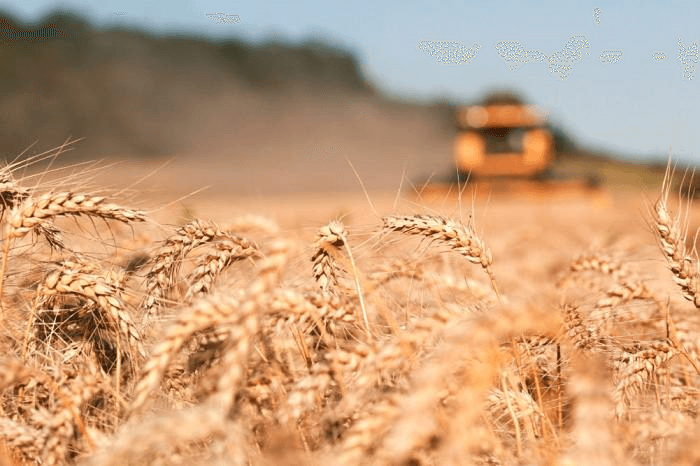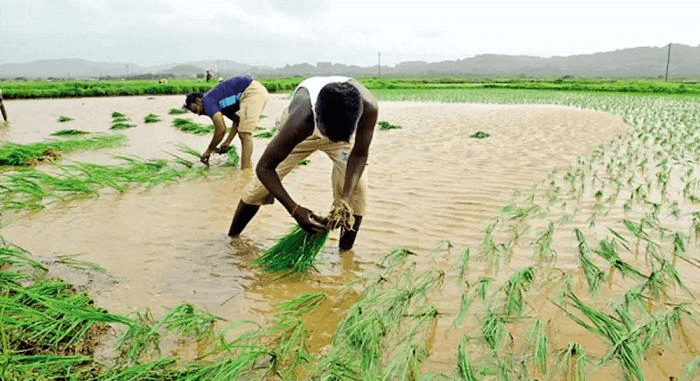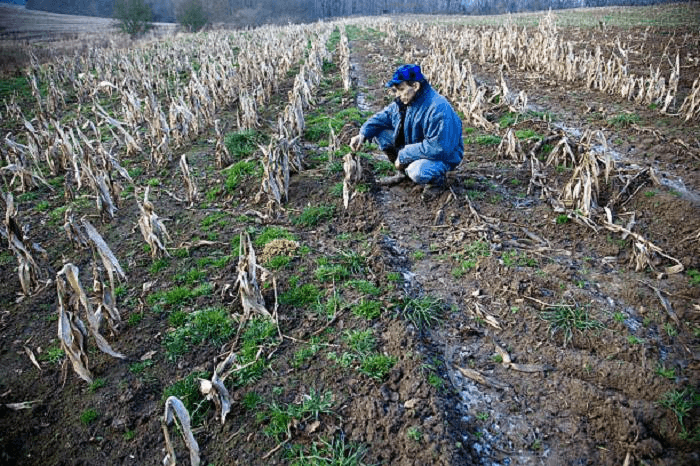Harvest DefinitionHave you ever wondered how we have clean, well-supplied food grains delivered right to the shop or nowadays even at our doorstep? The process which makes this possible is called harvesting. Farmers harvest the produced crops using both conventional and modern methods. When a given crop reaches its maturity, there are numerous steps to harvesting a variety of crops. The crops are generally picked when they grow completely as picking crops when they have fully developed results in high income and high-quality output. 
Pest propensity may result from crops like pulses, cereals, oilseeds, etc., being left in the field after reaching maturity for an excessive amount of time without being harvested which makes harvesting a fairly important step in crop production. Let us learn more about what harvesting entails, how it happens, and why it is so important. Knowledge of Agricultural PracticesLet us first understand what is the meaning of crops. Crops are identical or similar plants that are cultivated on a wide scale. In order to produce superior agricultural goods, a set of regulations called agricultural practices must be followed on agricultural fields. These direct farming techniques are employed to streamline the agricultural process. When cultivating crops, several agricultural practices are used. The practices are as follows: preparing the soil, planting, adding manures and fertilizers, irrigation, protecting from weeds, harvesting, and storing. What is harvesting?The act of gathering a mature crop from the fields is known as harvesting. As the plant reaches average maturity, it is done in order to meet the user demand for seeds, rhizomes, bulbs, tubers, stems, leaves, stalks, or others while ensuring the least loss suffered by the farmer. The method of harvesting varies depending on where the good grains are located in the plants. Cutting, digging, picking, laying, gathering, curing, and stacking are some of the possible tasks involved. The immediate post-harvest procedures like threshing and winnowing are also typically included in the definition of harvesting. They are briefly explained below: Threshing: Threshing is the process of separating the grains from the chaff after crops have been harvested. All of the grain seeds can be separated manually or mechanically. Winnowing: With the assistance of the wind, winnowing is a technique for separating grain seeds from the chaff. The wind causes the heavier grains to fall while the lighter husks fly away. Techniques for HarvestingThe crop can be chopped or harvested using three different techniques. 
Stages of Harvesting Procedure1. ReapingReaping is the process of removing mature panicles and straws that have grown above the ground. 2. ThreshingThreshing is the process of separating the food grains?such as paddy, wheat, etc.?from the rest of the cut crop. 3. CleaningCleaning is a crucial step in the harvesting process, and it mainly entails figuring out how to get immature and non-grain particles, dust, and other contaminants out of edible food grains. 4. HaulingThis is a significant step in harvesting as in this step, the food grains are transported to the threshing area. 5. Field DryingThe cut crops are left in the field and dried by the sun using the field drying technique. The grains in the raw grass are made easier to separate by drying. 6. Stacking/PillingStacking is the process of piling or stacking harvested crops for storage. 7. BaggingThe final step in the harvesting process is bagging. For storage and transportation, the threshed grains are kept in gunny bags. 8. The Keeping of GrainsThe last step in agricultural methods is storage. The harvested grains are put in storage facilities for later consumption and sale. Thus, it is necessary to utilize a better storage protection procedure to shield grains from pests, insects, and rodents. Before storing or depositing the grains, the stockroom is cleaned, fumigated, and dried. The grains are then shipped to various locations during the year. Benefits of HarvestingThere are several benefits of harvesting. The first and most basic benefit is a decrease in crop wastage. When we use the right method to deal with our crops and harvest them properly, it decreases grain waste and improves grain quality and quantity.
Harvest FailureCrop failure, also known as harvest failure, is the absence of or a significantly lower crop yield than anticipated. It results from the plants being harmed, killed, or otherwise negatively impacted to the point where they are unable to produce the expected quantities of edible fruit, seeds, or leaves. 
Harvest failures can result from catastrophic occurrences like plant disease outbreaks (like the Great Famine in Ireland), heavy rainfall, volcanic eruptions, storms, floods, or drought, as well as from slow, cumulative effects of soil degradation, excessive soil salinity, erosion, and desertification, which are typically caused by drainage, over-drafting (for irrigation), over-fertilization, or overexploitation. The spread of industrial monocultures has resulted in overexploited soils that are almost incapable of regeneration due to their reduced crop diversification and high reliance on synthetic fertilizers and pesticides. Unsustainable land use over time reduces crop productivity and decreases soil fertility. Because of global population growth and local overcrowding, even small yield declines already represent a partial harvest failure. Causes of Crop Failure1. Adverse Climatic ConditionsClimate conditions are the first thing that comes to our mind when we talk about crop failure. It is most probably on top of the list of causes of crop failure. Adverse weather refers to climate conditions that are too difficult for the crops and the chances of survival of crops become very low. Such conditions include extremely hot or cold temperatures that result in crop drying up due to intolerable heat waves or drying up due to extremely cold weather. 2. Unpredictable Weather ConditionsThe climatic and weather circumstances can be incredibly unpredictable. Because of the constant shift in weather, the seasons of crop production have been disrupted. For example, a protracted drought, a protracted wet season, flash floods, or a full shift in season. The unpredictable weather is a result of human activity, including global warming and it has a very drastic effect on crop production. 3. Pests and DiseasesIt is an everlasting problem and every farmer is worried about how pests are affecting our crops. Pests have an impact on how well crops develop in the fields. It might be very expensive for some small-scale farmers to get rid of these pests. For instance, the majority of farmers in developing countries would watch as pests like armyworms, stem borers, black cutworms, and Asian garden beetles eat their crops because they lack the funds to buy pesticides. It is a leading cause of crop failure and some measures are taken by the government to help small-scale farmers tackle this problem. Crop failure is also caused by a number of illnesses. Southern rust, Pythium, and leaf blight are a few of these ailments. If pests and diseases are not identified and controlled in a timely manner, there could be severe crop failure. 4. Poor Farming PracticesCrop failure can also result from poor farming practises. If a farmer fails to take care of their crops properly, they can suffer a great deal. It involves ignorance as well as financial problems that result in poor yield of crops. Poor agricultural practises are primarily a result of ignorance of contemporary farming procedures and a lack of resources to adopt farming technologies. Monoculture and the improper use of pesticides and fertilisers are two farming practises that could result in crop failure. Applying and practising new and superior farming techniques significantly reduces crop failure. 5. Human ActivitiesIn addition to all the other causes of harvest failure, humans, directly or indirectly, affect crop production. Crop production is impacted by a variety of actions taken by humans. The application of strong pesticides can result in the destruction of crops. Poor industrial waste management practises may increase the amount of greenhouse gases in the atmosphere, which is another activity that could result in crop failures. These gases such as sulphur dioxide cause acid rain to fall and plug leaf pores. These events cause crop wilting, which leads to crop failure. How to Prevent Crop FailureAn effective way to prevent harvest failure is by using fertilizers and performing global trade of crops. Fertilizers eliminate the initial requirement for soil regeneration, and global trade stops local crop failures from turning into famines. Some methods to prevent crop failure are listed below: 1. Advanced Machinery: These days lots of advanced machinery is available for irrigation, harvesting, storage, etc. Farmers can make use of such machines to enhance production and prevent crop failure. 2. Herbal Pesticides and Fertilizers: Farmers can use herbal manure that has a less bad effect on the crops. It also helps prevent crop failure. 3. Rainwater harvesting: Rainwater can be harvested and used for irrigation during less rainfall to reduce the chances of crop failure. ConclusionThe process of harvesting is executed with the help of a number of steps. It is a very important process in crop production as it ensures that the quality, quantity and profit of the crop are maintained. If a crop is not harvested in the right manner or left on the field after its maturity, it can lead to harvest failure which causes a number of issues for the farmer as well as the consumer.
Next TopicDesign Definition
|
 For Videos Join Our Youtube Channel: Join Now
For Videos Join Our Youtube Channel: Join Now
Feedback
- Send your Feedback to [email protected]
Help Others, Please Share










